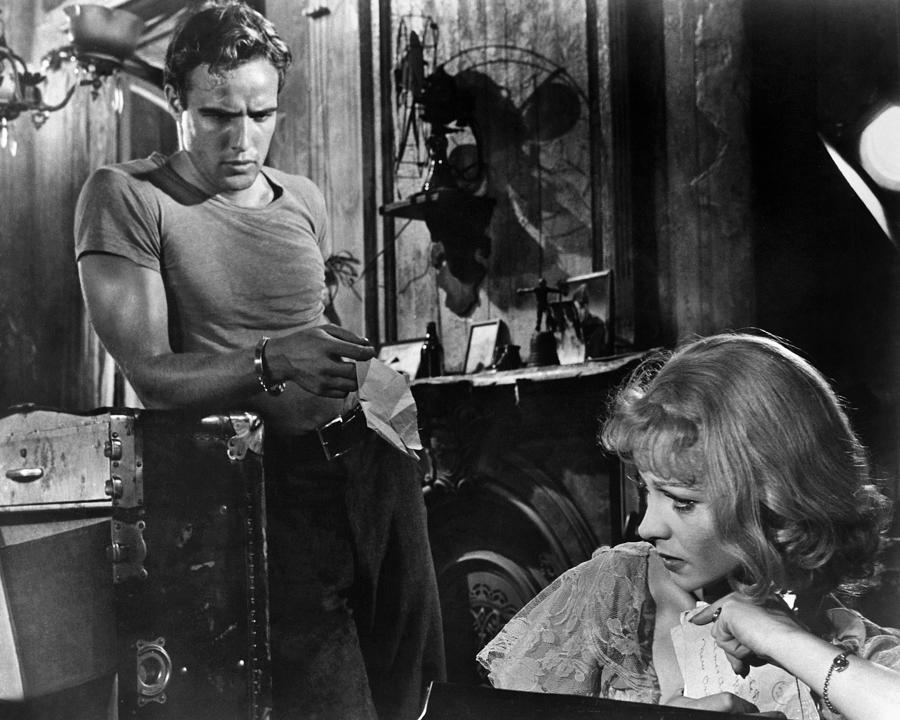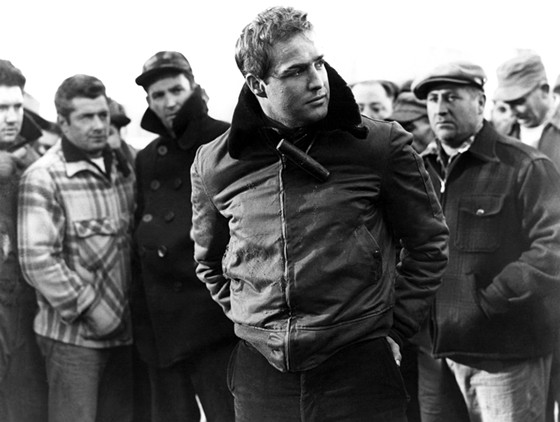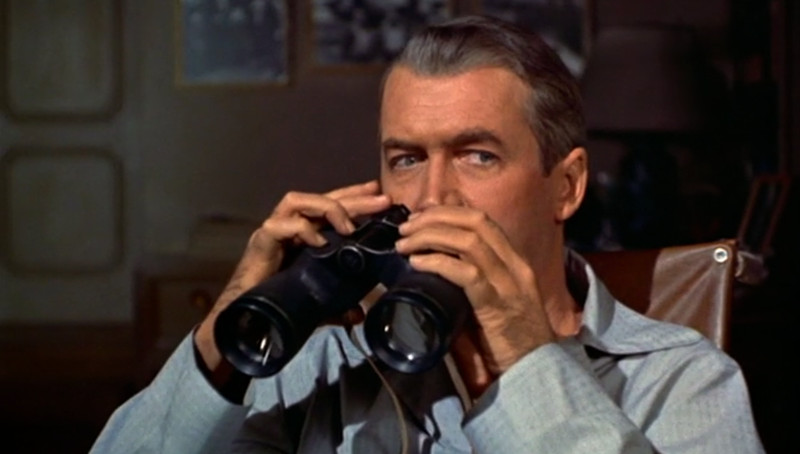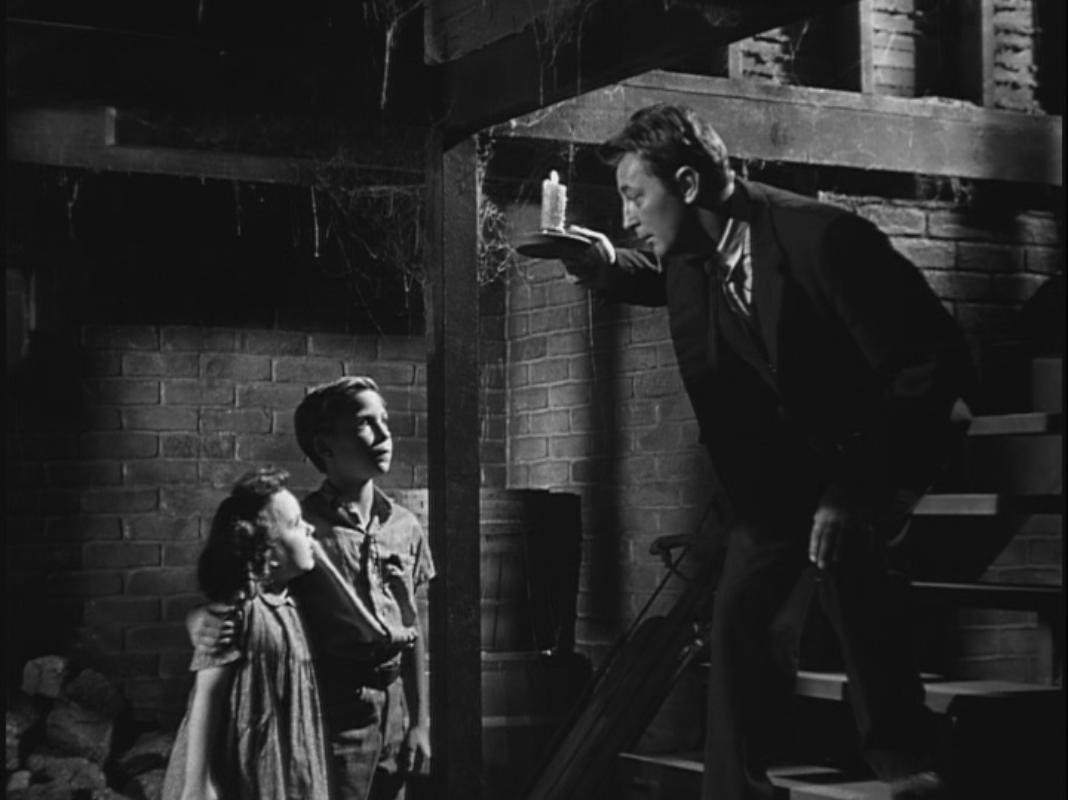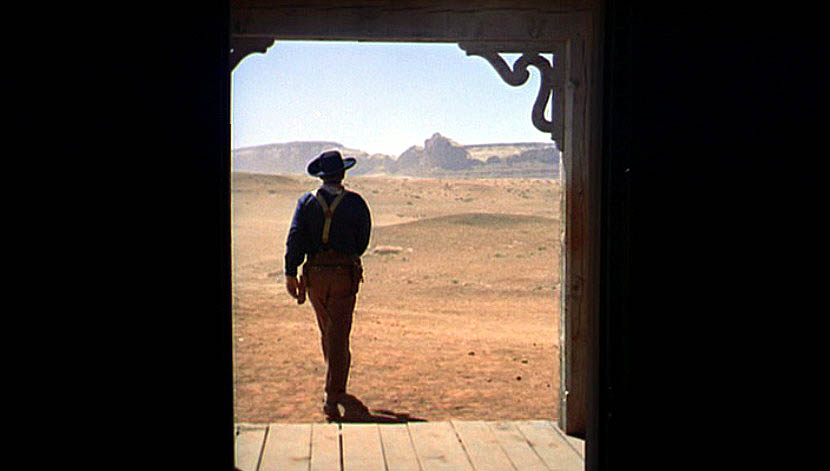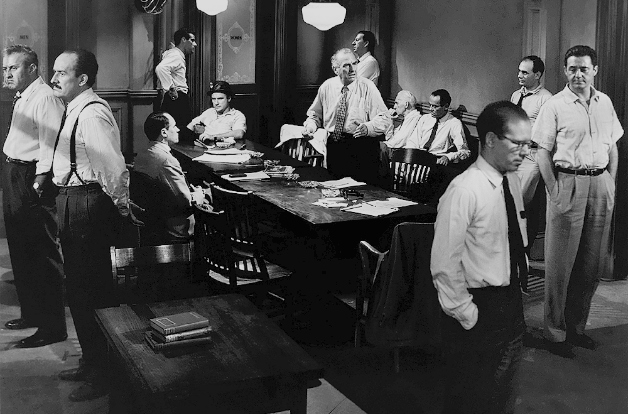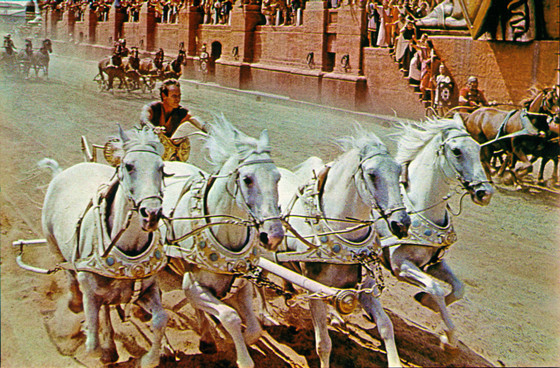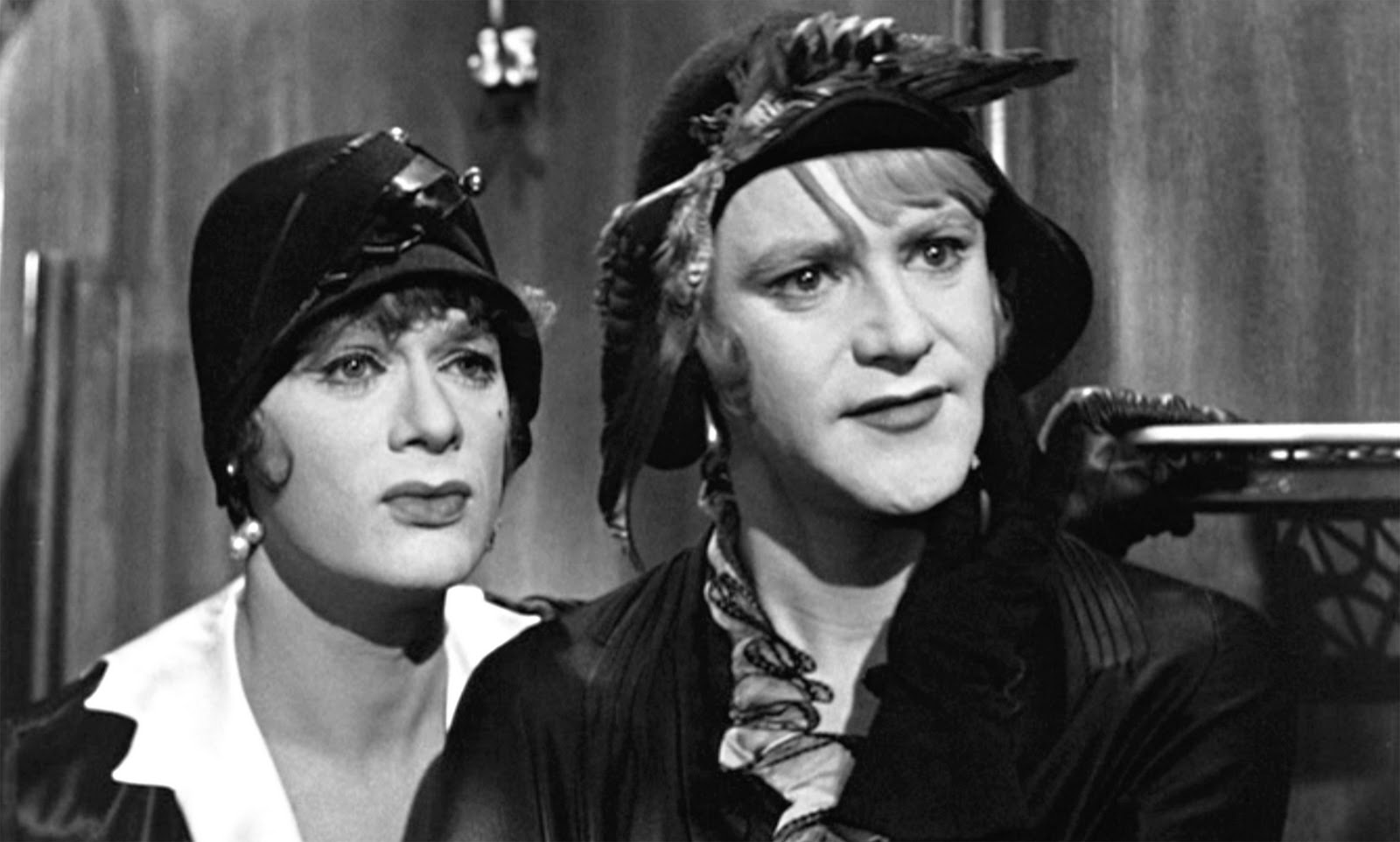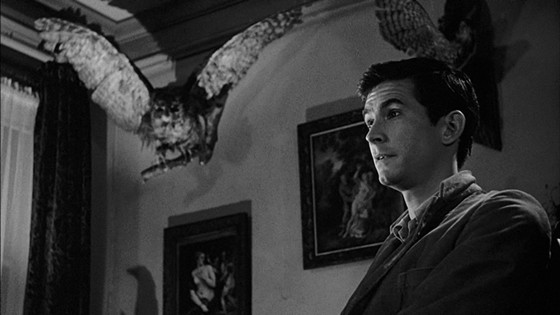21. A Streetcar Named Desire (1951)
The first adaption for the screen of Tennessee Williams’ controversial, award-winning play, A Streetcar Named Desire, stars Vivien Leigh in her second Oscar-winner role of Blanche Dubois, a troubled southern belle who moves in with her sister only to be persecuted by her dominant brother-in-law Stanley Kowalski, played to perfection by method acting exponent Marlon Brando.
This story of complex, conflicted characters was brought to the screen by stage and Film director Elia Kazan, who successfully kept the antagonistic blend of fantasy and tough reality presented in the original play.
The film won four Academy Awards and, to this day, is constantly referenced in popular culture, from pop songs like Lana Del Rey’s “Carmen” to Woody Allen’s films and The Simpson’s episodes, A Streetcar Named Desire has left a permanent mark, not only as a film, but as an extraordinary example of a work of art.
22. Singin’ in the Rain (1952)
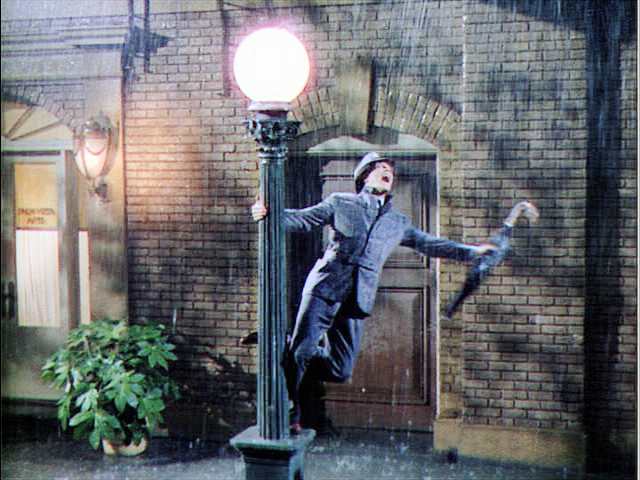
We all like to make fun of Hollywood films sometimes, but it’s safe to say, no one does it better than Tinseltown itself. In this outstanding musical, Hollywood looks back at its past, presenting the difficult transition from Silent Films to Talkies in a playful light.
Debbie Reynolds, Donald O’Connor, Jean Hagen and Gene Kelly ( who also co-directed the movie alongside Stanley Donen) are all part of a brilliant cast who sing and dance to eminent songs like “Good Morning” “Make ‘Em Laugh,” and, evidently, the enduring title song, which first appeared in Charles Reisner’s Hollywood Revue of 1929, but only secured its celebrated status thanks to this 1952 motion picture, which rightfully tops AFI’s 100 Years of Musicals list.
23. On the Waterfront (1954)
Terry Malloy (Marlon Brando) is a frustrated dockworker involved in a net of corruption and bloodshed. His unscrupulous union bosses have already taken away his shot at being a boxing-champion, and now Malloy finally has a chance to dismantle their vicious scheme by testifying against them before a Crime Commission, but will he dare to face such powerful men?
Director Elia Kazan was said to have used On the Waterfront as a response to those who attacked him, when in 1952, he chose to speak before the House Committee on Un-American Activities.
This notorious political context would be enough to make the film an interesting pick, but the crime drama has infinitely more to offer: First off, its eight Academy Awards, including a Best Supporting Actress Oscar for Eva Marie Saint in her screen debut, it also features a hauntingly beautiful black-and-white Cinematography by Boris Karufman and carries the honor of being the only original film score composed by Leonard Bernstein as well as the American Film Institute’s vote as the eighth all-time greatest American movie.
24. Rear Window (1954)
Alfred Hitchcock’s mystery thriller is a work of craft. From its masterful directing and thoroughly enthralling story about human curiosity, to Grace Kelly’s exquisite costumes by legendary Edith Head, there’s not one shot in Rear Window that doesn’t feel perfectly composed.
It is possible that no other director in the History of Film has known how to manipulate his audience as effectively as Hitchcock did. When wheelchair bound James Stewart thinks he witnessed a crime at his neighbors’ through the window of his apartment, the spectator can’t help feeling like a Peeping Tom as well.
Treated as one of the best examples of the genius director’s work, the movie has been utterly acknowledged by The American Film Institute, appearing on five of its prestigious lists, among others the famed 100 Years… 100 Movies.
25. The Night of the Hunter (1955)
The Night of the Hunter is the only movie renowned actor Charles Laughton directed in his distinguished Hollywood career. Efficiently balancing a poetic visual style with a sinister plot about evil reverend Harry Powell (Robert Mitchum), who marries a naive widow (Shelley Winters) and torments her two children about 10.000 dollars hidden by their dad, the movie recaptures the idyllic aesthetic of the great Silents.
For that purpose, Laughton also cast illustrious 1920’s leading-star Lillian Gish, who gives a tour de force performance as Rachel Cooper, a strong elderly lady who protects the children from Powell.
This unique master work has been a source of inspiration for directors like Martin Scorsese and David Lynch and it has also been named the second greatest film ever by French Film publication Cahiers du cinéma.
26. The Searchers (1956)
After a Comanche tribe brutally murders Ethan Edwards’ brother and his family, the Civil-War veteran sets out to rescue his only surviving niece from the Indians. This quintessential Western was directed by renowned filmmaker John Ford and stars American Film Legend John Wayne.
The Searchers has the famous actor-director duo at the height of their creative talent. As Ethan, Wayne delivers one of his finest performance, a man so overcome by anger that he risks his own sanity and honor in exchange for the fulfillment of revenge. The cultural and historical relevance of the film made the United States Library of Congress select it for preservation, in 1989, it is also frequently cited on BFI’s decennial Sight and Sound poll of the greatest films of all time.
27. 12 Angry Men (1957)
Sidney Lumet’s first feature promptly revealed the director’s talent with handling complex themes such as social justice. He virtually emerged as a cinematic force of naturalism, largely inclined towards realism and seldom calling attention to Cinematography or Editing, but instead, singling out actor’s performances such as Henry Fonda’s and Lee J. Cobb ‘s.
In this uncommon courtroom drama nothing looks stilted or formal. The movie is a work of excellence thanks to its biting script, competent directing and efficient cast. While exploring hidden prejudices and social traumas, Lumet displays how genuinely great films don’t depend on large budgets or flashy visuals, but simply call for a quality script and careful if not pretentious directing.
28. Ben-Hur (1959)
Hollywood’s obsession with remakes, contrary to what many believe, is not a new trend. William Wyler’s 1959 epic drama is a retelling of Lew Wallace’s novel which first reached Cinema screens in 1925.
In addition to sound , the new version also differed from its predecessor by its gorgeous color and widescreen format. Both features were attempts from MGM to respond to the rise of Television, which would ultimately contribute to the end of the Classical Movie Era by the 1960’s.
Ben-Hur’s production values were as epic as its story. Its massive sets, thousands of extras and extensive crew amounted to a budget of over 15 million dollars, the largest of any movie up to that point.
The story of the Jewish prince turned slave (Charlton Heston) also holds the record for the longest musical score created for a Film. The impressive expense and effort paid off, the film holds up remarkably well almost 60 years later and certainly gives many CGI-filled productions a run for their money.
29. Some Like it Hot (1959)
The first Marilyn Monroe-Billy Wilder project, 1955’s The Seven Year Itch is perchance more emblematic exclusively due to Monroe’s flying dress scene. In terms of quality, however, critics agree that in Some Like it Hot, Wilder hit a new peak of comedic excellence.
In this priceless venture, Tony Curtis and Jack Lemmon are two musicians who witness a mob crime, and fearful of the gangsters, disguise themselves as women, joining a travelling female band. Things get even more complicated when both friends fall for the troupe’s vocalist, Sugar Kane (Monroe).
The spunky dialogue, lively performances and flawless directing guaranteed the film’s first place on the American Film Institute ‘s list of best American comedies. It’s also worth notice that the film carries some of the most well known Monroe songs like “I’m Thru with Love” and “I Wanna Be Loved by You”.
30. Psycho (1960)
Who would have thought a low-budget B Film, shot entirely with a TV crew, would turn into of the most prestigious films in the entire History of the medium? Well, when taking into account it was directed by Alfred Hitchcock, it doesn’t sound so absurd anymore.
From its first shot of an unmarried couple sharing a bed, Psycho made history by helping to increase Film-audience’s acceptance of deemed “immoral” themes such as sexuality and violence, inevitably leading to the deterioration of the Production Code which restrained filmmakers from openly touching said issues.
It also revolutionized by killing its apparent protagonist halfway through the film. These departures from the standard classical narrative made way for Modern Filmmaking with the late 1960’s New Hollywood movement.
The most iconic scene of the thriller, that centers its plot on two morally-questionable characters: mentally-troubled motel-owner, Norman Bates, and runaway embezzler secretary, Marion Craine, is of course the murder in the shower. Its less than 4 minutes contain an amazing 77 camera angles to Bernard Hermann’s haunting all-string music. In short, Psycho is a must-see for anyone that likes to call himself a cinephile.
Author Bio: Priscilla Signorelli is a 23-year-old Brazilian Film Graduate. She’s obsessed with everything Classic Hollywood, but will gladly watch anything from Ingmar Bergman to Marvel movies. Her dream is to work as a Film Historian and share her passion for old movies with the world.
